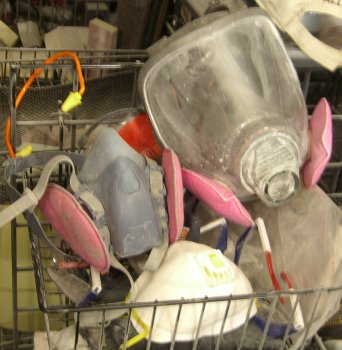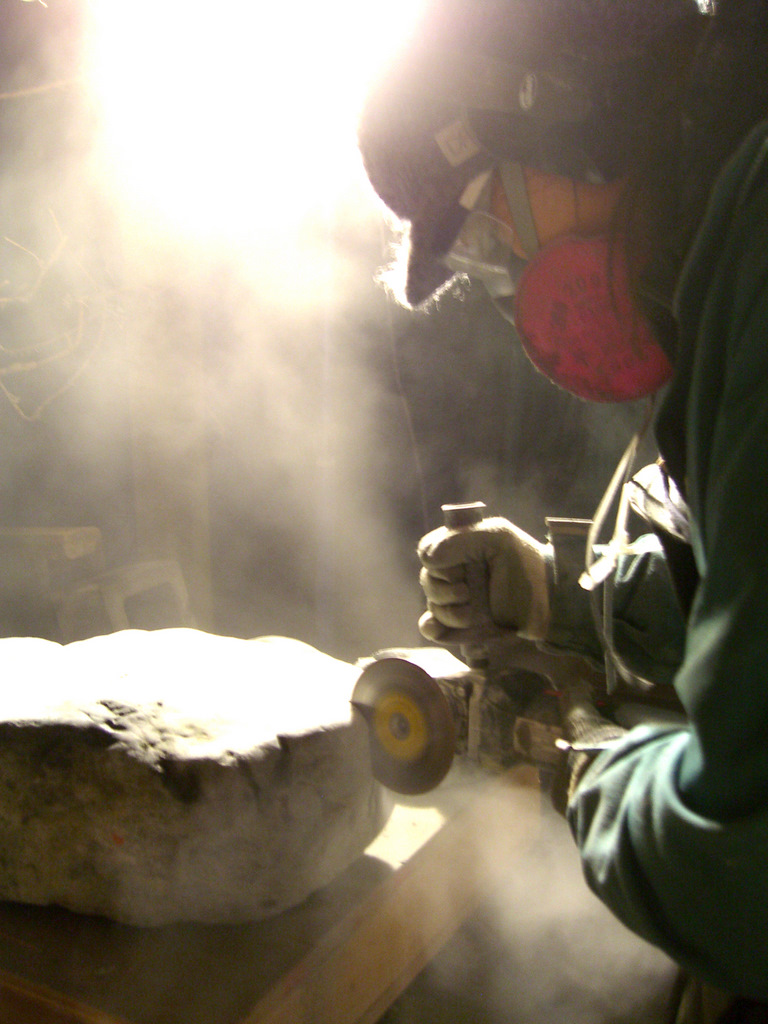
Dust produced while working with stone containing silica and other harmful minerals is not just an annoying problem, it is a real concern and threat to your health as well as anyone who hangs around your dust filled studio space. Maybe you work wet on everything, capture all the sludge run-off and keep it contained, but for those of us that do not, protective breathing should be practiced, constantly. Learn about what's in the stone you are working, if you are uncertain then wear a filter on your face.

Use an N-100, not an N-95. The 100 part means 100% of all fine particles, and 95 is 95%. What's important to me is that for silica dust no amount of particles is acceptable, so therefore if I'm working around silica based stone - granite, it's a necessity to use N-100 and a respirator that seals against my face so all the air I breath is filtered.
Seattle University - Health and Safety Programs - Respiratory Protection Programs This link has a good section on how to check your mask for fit before use, along with all the other information that is required of industry. Fit tests at symposia should be a first day activity and maybe NWSSA should make it part of the regular program?
http://www.osha.gov/Publications/3362silica-exposures.pdf A new OSHA publication with sections on many of the tools used in stone sculpture. They address the dust first by environmental control and last by the use of personal protective equipment.
